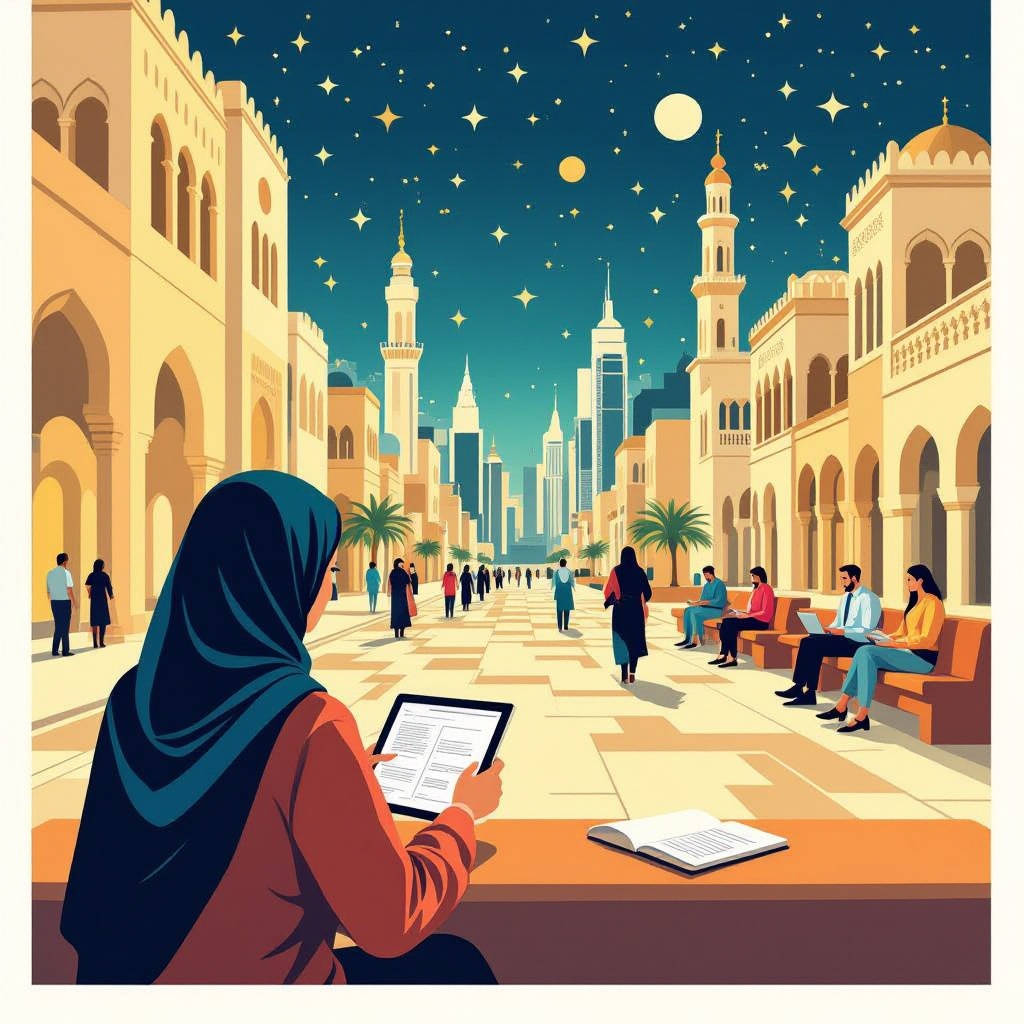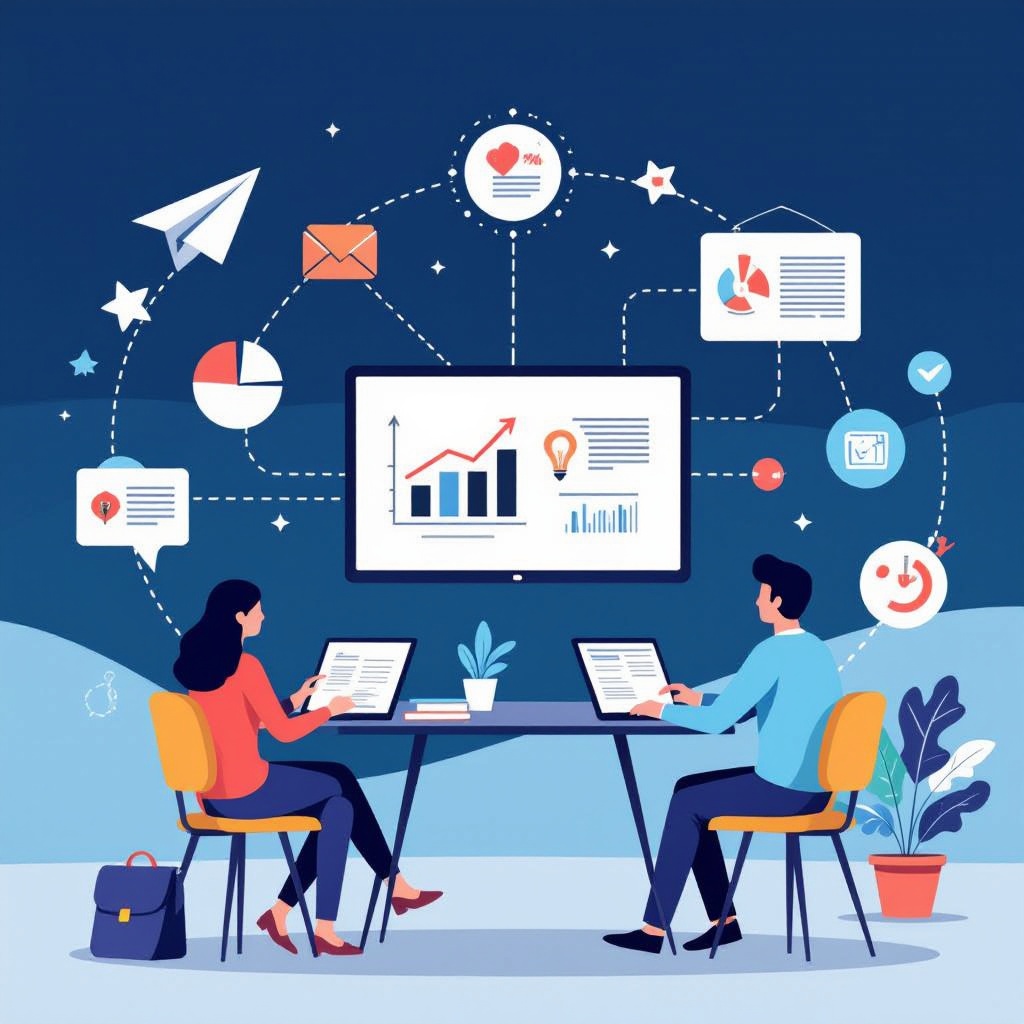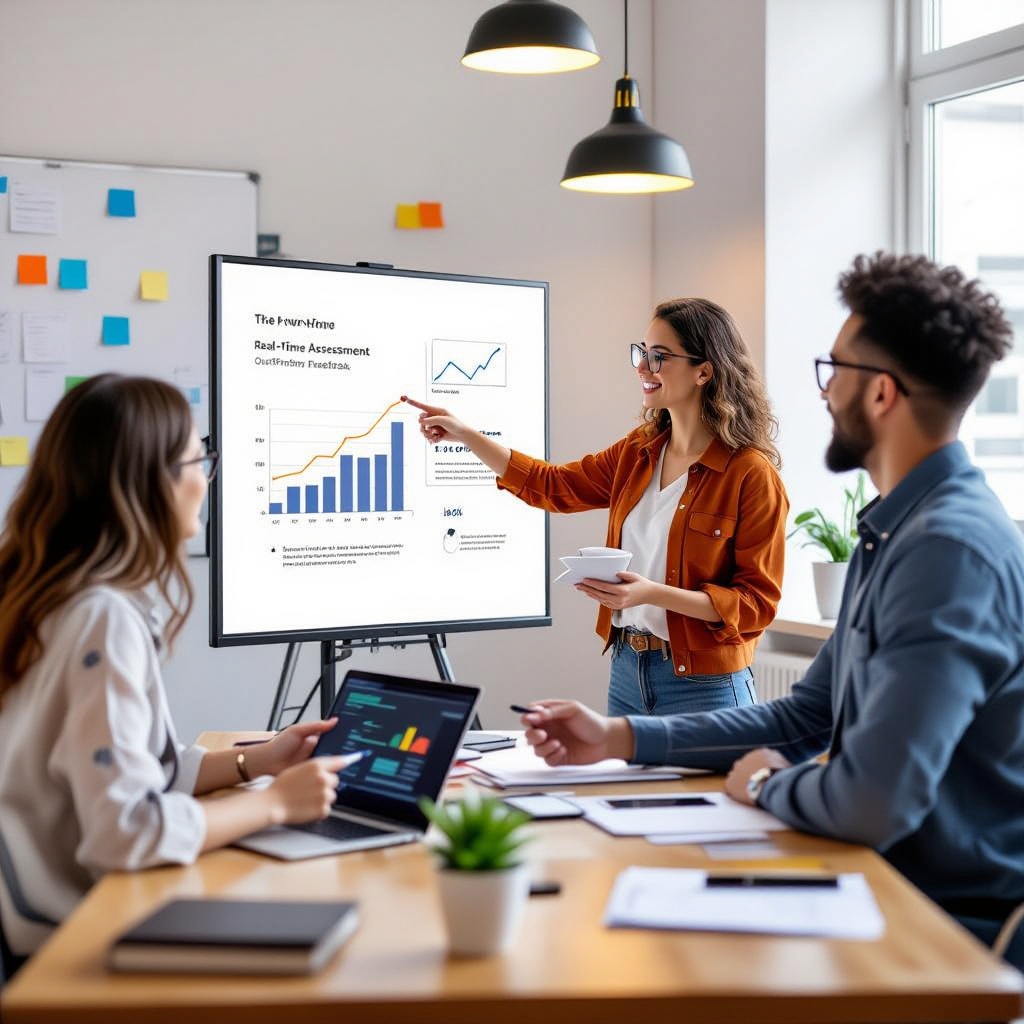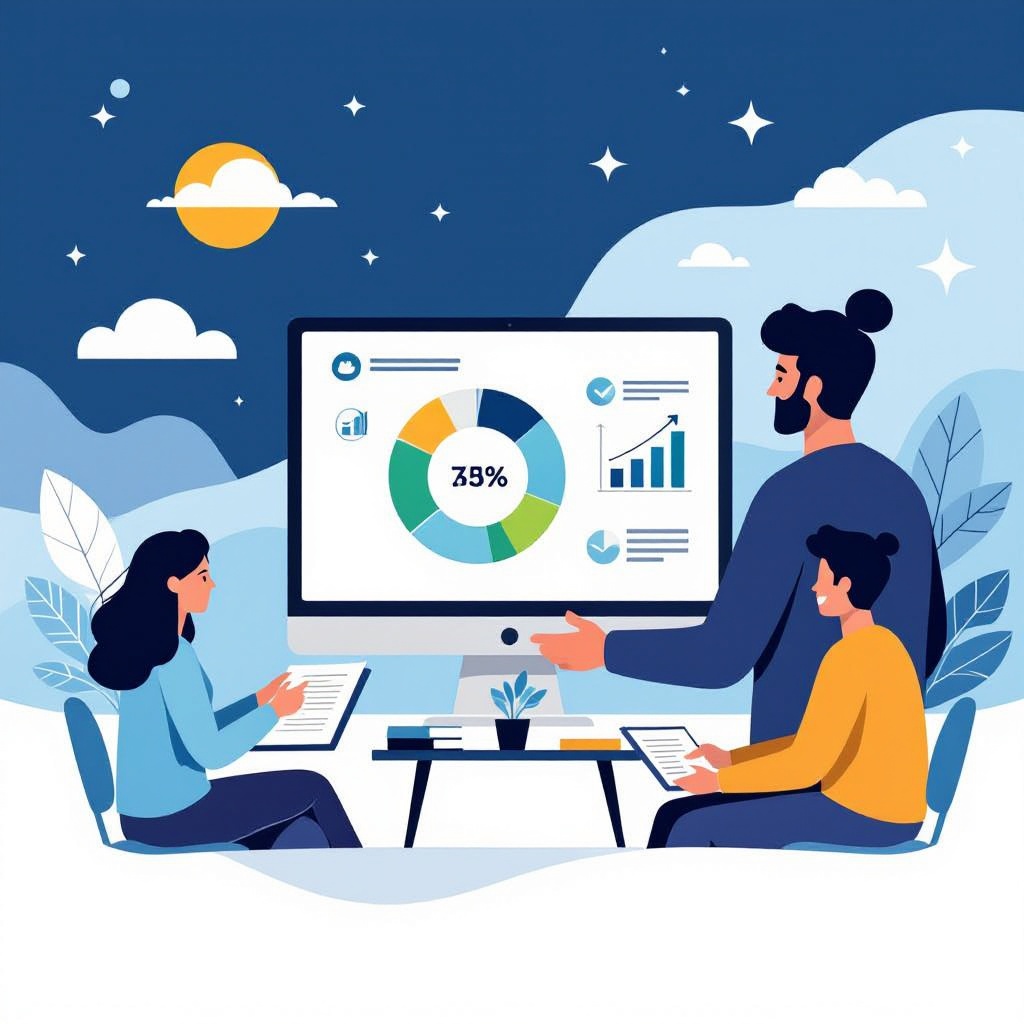In the Gulf region, digital-first students are thriving compared to those holding on to traditional paper-based methods. Government-backed initiatives, such as Saudi Arabia’s Vision 2030 and the UAE’s Smart Learning projects, are driving this educational transformation. These efforts have accelerated the e-learning market and reshaped how knowledge is accessed and engaged with. Today’s digital platforms are tailored to meet the dynamic learning needs of modern students.
🔑 Key Takeaways
-
📈 The Gulf’s commitment to digital education is fueling rapid e-learning market growth—from $6.8 billion in 2025 to an expected $24.2 billion by 2033.
-
🌍 Digital platforms offer unmatched flexibility and accessibility, crucial for students in remote areas. With over 99% of the UAE’s population online, digital learning has near-universal reach.
-
🤖 Personalized learning through AI, AR, and VR creates immersive, engaging experiences—boosting both interaction and knowledge retention.
-
📊 Real-time assessment and feedback help improve academic performance by enabling immediate interventions and adjustments.
-
🌱 Digital learning supports sustainability by cutting down on paper waste and leveraging mobile + internet infrastructure, extending education farther than ever before.
Digital Transformation in Education: The Gulf’s Government-Led Revolution
Exploring the educational shift in the Gulf, the monumental investments in digital education spearheaded by regional governments stand out. Saudi Arabia’s Vision 2030 and the UAE’s Smart Learning initiatives are pivotal. They’re reshaping how students learn, pushing digital education to the forefront.
The GCC’s e-learning market is on an impressive growth trajectory. Experts project it will jump from $6.8 billion in 2025 to a whopping $24.2 billion by 2033, reflecting a 14.4% CAGR. Such expansion shows both the demand for, and effectiveness of, digital learning.
These government-led efforts are more than just plans on paper. They’ve catalyzed digital adoption, boosting students’ skills and academic responsiveness. Digital-first learners not only gain knowledge efficiently but also adapt more rapidly to educational challenges. This digital focus ensures they’re prepared for both present and future educational landscapes.
For deeper insights into these initiatives, Saudi Vision 2030 offers comprehensive details.

Unmatched Flexibility and Accessibility in the Digital Classroom
Digital platforms redefine learning by breaking the barriers of time and place. For students in remote or resource-constrained areas, this means unprecedented educational access. With over 11.1 million users online, comprising more than 99% of the UAE population, digital learning’s accessibility is unrivaled. It’s a win-win, particularly in these regions where traditional resources might not reach.
Cloud-based e-learning has seen a notable rise, offering opportunities for greater participation and fewer missed classes compared to old-school paper methods. For instance, research highlights increased student engagement and less absenteeism. This shift isn’t just about convenience—it’s about opportunity.
For those wanting further insights on how e-learning is impacting global education landscapes, the UNESCO website provides a wealth of knowledge. Additionally, the World Economic Forum offers compelling data and discussions surrounding digital learning advancements.
Personalized Learning: Tailoring Education with Tech
Tech has revolutionized education by customizing learning experiences for students. AI, AR, and VR play pivotal roles here. They create personalized and adaptive learning paths to cater to diverse learning preferences. AI analyzes student data to offer customized resources and feedback, ensuring individual needs get addressed.
AR and VR add an immersive dimension, making learning more engaging and interactive. These technologies allow students to visualize complex concepts and practice skills in a simulated environment. This enhances understanding and retention.
In the Gulf, microlearning tools have become popular in educational institutions. They break down information into bite-sized lessons, making it easier for students to grasp and retain knowledge. This approach supports better engagement, as it fits seamlessly into their daily routines and busy schedules.
Countries like the UAE and Saudi Arabia are leading the charge in embracing these innovations. Their institutions have adopted advanced technologies to foster interactive and personalized education. This progress reflects a commitment to enhancing students’ learning experiences, setting a benchmark in educational practices.
Want to dive deeper into these trends? Check out EdSurge for more insights into how tech is transforming education on a global scale.

The Power of Real-Time Assessment and Feedback
Digital platforms have revolutionized the educational landscape by offering instant quizzes and analytics, which significantly enhance student performance. With these tools, educators can quickly assess student understanding and intervene promptly. This timely feedback loop is crucial in catching misunderstandings before they become ingrained.
On the other hand, paper-based systems lag behind due to the inevitable time delay in grading and returning quizzes. This delay can stall learning progress, as students continue without knowing where they need improvement. Contrast this with digital assessments—students can immediately see their results, allowing teachers to adjust teaching methods or revisit problematic topics on the spot.
Studies have shown that early interventions can lead to improved academic outcomes. In the Gulf Cooperation Council (GCC) region, the adoption of e-learning tools has seen a noticeable rise in educational achievements. Digital platforms enable personalized learning experiences, aligning perfectly with GCC’s growing emphasis on tech-driven education [source: eLearning Industry].
For students, parents, and educators interested in exploring more about the benefits of digital-first learning, resources like EdTech Magazine provide in-depth insights and latest trends. Embracing digital tools not only prepares students for modern education but equips them to thrive in an increasingly digital world. By fostering an environment where feedback is immediate, both students and educators can focus on continuous improvement.

Rapid Skill Development for a Knowledge-Based Economy
The Gulf’s transition to a knowledge-based economy sparks a significant shift towards digital learning. This emphasis on digital tools isn’t an arbitrary choice; it’s crucial as these nations focus on upskilling and reskilling their workforce. Such an approach aligns seamlessly with the needs of contemporary industries. For instance, corporate Learning and Development (L&D) departments across the region increasingly opt for mobile and virtual tools to deliver precisely targeted job-aligned training. This method not only adapts to changing industry demands but also caters to learners’ growing needs for flexible and accessible learning solutions.
When comparing digital and paper-based learning, data clearly shows that digital curriculums excel in supporting rapid skill acquisition. Interactive content, real-time feedback, and adaptive learning paths make digital platforms more effective. Here are some reasons why digital-first strategies have the upper hand:
- Flexibility: Digital platforms allow learners to access materials anytime, anywhere. This flexibility encourages consistent learning habits.
- Personalization: Algorithms identify a learner’s strengths and weaknesses, personalizing the learning path to optimize skill acquisition.
- Collaboration: Digital tools offer collaborative environments where students engage with peers, fostering diverse perspectives.
It’s clear that digital learning isn’t just a trend. It’s an essential strategy for success (read more on UNESCO’s approach to digital education) in the Gulf’s burgeoning knowledge-driven economy. So, those aiming to thrive in this new landscape need to embrace these digital transformations.
Engagement and Environmental Sustainability in the Digital Age
Digital-first environments really pump up student engagement with interactive tools and social learning. With a staggering 100% social media penetration in the UAE, that’s 11.3 million users right there, it’s clear that this digital landscape is vibrant. Students connect, share, and learn without the limits of time or place.
Let’s talk about scalability and sustainability. Digital learning thrives with the UAE’s 21.9 million mobile connections, that’s 195% of the population, enabling widespread access. Plus, going digital cuts down on paper waste, supporting environmental sustainability. In contrast, traditional learning methods often struggle with resource efficiency.
Consider these advantages:
- Reduced paper waste that helps conserve resources.
- Greater flexibility and reach through digital platforms.
- Enhanced student interaction via social media.
For those curious, the UAE’s focus on technology is evident with these figures. Digital adoption isn’t just a trend—it’s an eco-friendly choice that reshapes learning. Curious about broader environmental impacts? Check out initiatives on Greenpeace’s sustainability page.

Frequently Asked Questions
📈 How is digital transformation reshaping education in the Gulf?
Driven by initiatives like Saudi Vision 2030 and the UAE’s Smart Learning programs, the Gulf is experiencing a major shift toward digital education. These government-led efforts are making education more accessible, personalized, and future-ready across the region.
🌐 Why is e-learning gaining momentum in the UAE and Saudi Arabia?
The rise of cloud-based solutions and impressive internet penetration (99%+ in the UAE) have fueled e-learning growth. Learners now enjoy flexible, convenient access to quality education—especially important for those in remote or underserved areas.
🎯 What are the benefits of personalized learning through digital tools?
Technologies like AI, AR, and VR tailor education to each learner’s needs, enhancing understanding and retention. Microlearning modules and adaptive platforms foster better engagement and support diverse learning styles across the Gulf’s modern classrooms.
📊 How do digital assessments improve student performance?
Real-time quizzes and analytics let educators identify and address learning gaps immediately. Unlike paper-based methods, digital feedback supports faster intervention and continuous improvement, leading to stronger academic outcomes in the GCC region.
💡 How is digital learning contributing to a knowledge-based economy?
Digital education aligns with the Gulf’s shift to a knowledge-driven economy, supporting rapid upskilling and reskilling efforts. With features like personalization and mobile access, digital tools meet evolving workforce demands and promote lifelong learning.
🌱 Is digital learning more sustainable than traditional methods?
Yes! Digital platforms reduce paper usage and are highly scalable, making them more ecologically sustainable. In tech-savvy nations like the UAE, education now supports both academic growth and environmental responsibility.
